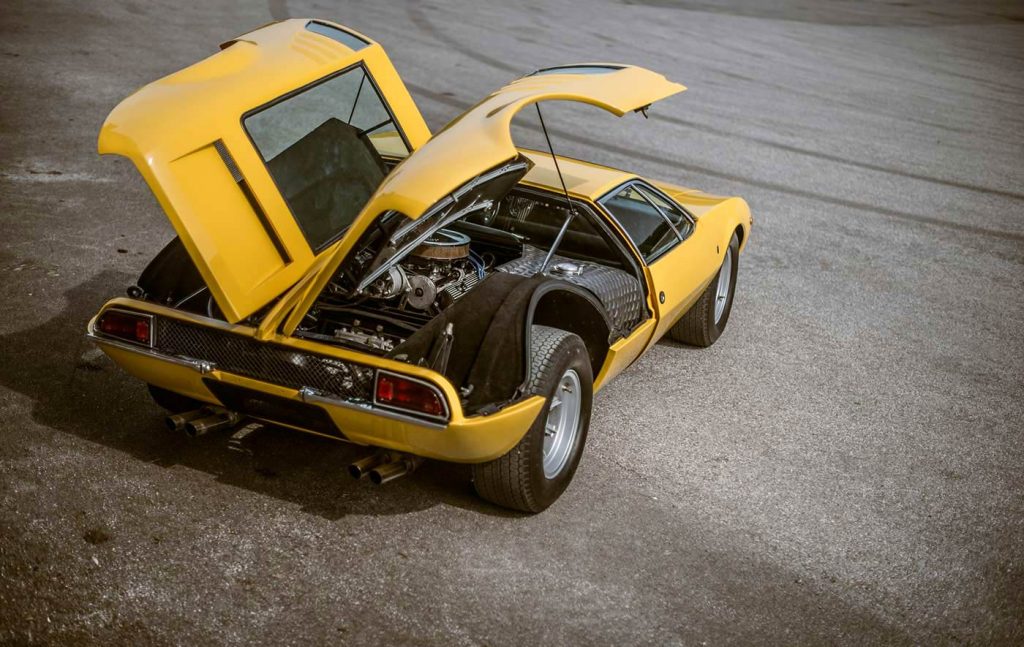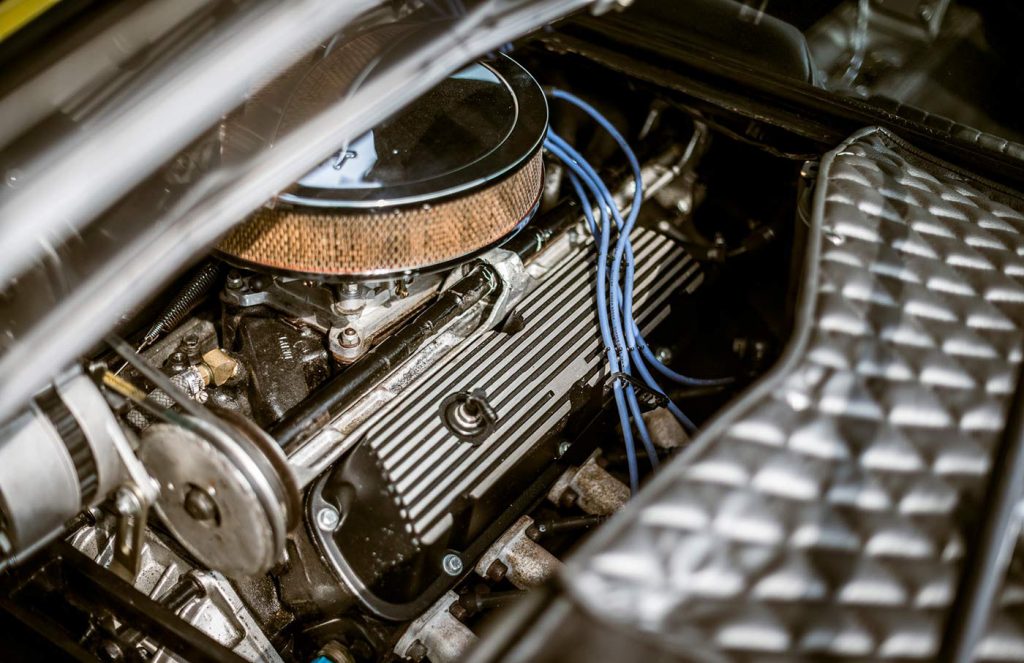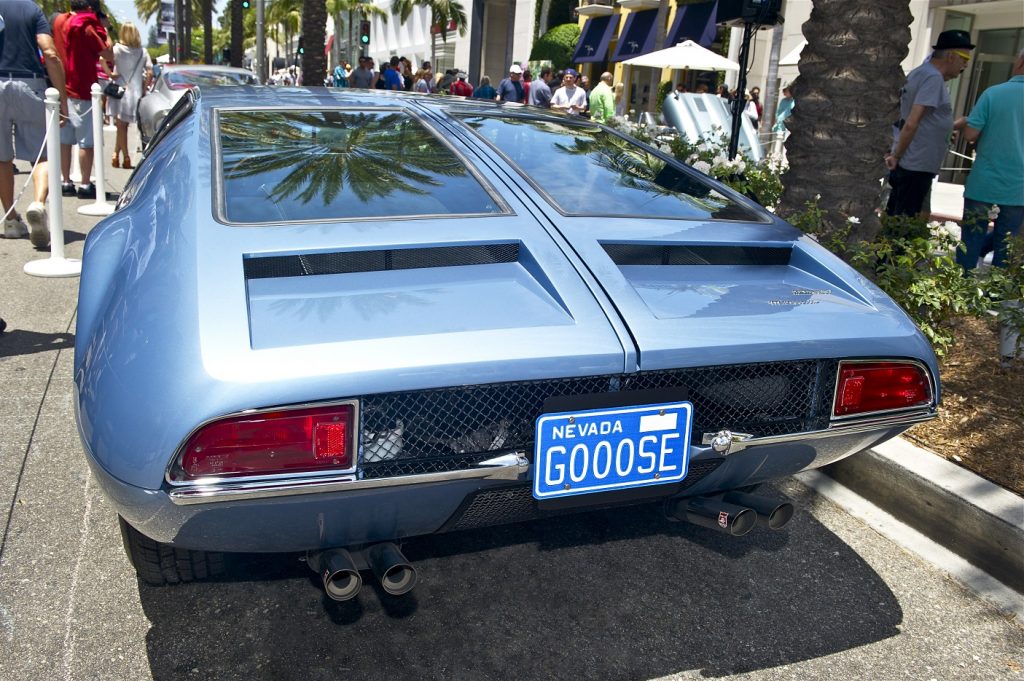What if we told you there existed a Ford-powered Italian supercar inspired by Carroll Shelby, designed by the guy who created the DeLorean, that looked like a Lamborghini, had F1 suspension, incorporated a pioneering mid-engine design, and was intended to beat the Shelby Cobra while taking the place of the GT40? You might call such a car a storied mutt. We call it the De Tomaso Mangusta.

the Mangusta’s gull wing doors lifted to reveal the motor and rear chassis
The Brainchild of an Argentinian Racer
This stunning late 60’s supercar is the brainchild of former Formula One racing driver Alejandro de Tomaso. He founded a company in his own name and believed he could build his own supercar to compete with the era’s greats.
Inspired (and Powered) by American Muscle
In fact, Tomaso named his creation the Mangusta (“Mongoose”) as a sly wink to the venerable Carroll Shelby, a friend of Tomaso’s and whose creations he intended to beat on the track. The Mongoose is, after all, the Cobra’s only natural predator. It’s rumored that the Argentinian approached Shelby about replacing the Cobra with a Tomaso design, but Shelby eschewed the idea in favor of developing the Ford GT40. More nefarious rumors abound that because of this almost-deal, some Mangusta engines came from Shelby.

The Mangusta was fired by Ford 289 (European) and Ford 302 (American) V8 motors
Though few were made, the Mangusta was a natural success. That’s largely thanks to the legendary hands that helped build it. None other than famed car maker Giorgetto Giugiaro (creator of the Ferrari 250 Berlinetta, Maserati Bora and Merak, and BMW M1) penned the design of the vehicle, and the car was built by Ghia of Turin.
Drawn by an Italian car legend
Some of Giugiaro’s notable design elements include gull wing doors that cover both the engine and luggage compartment, quarter panel air louvers, beautifully retro quad headlights, a diamond billet grille and billet rear fascia, and wedge body lines that perhaps the designers of the Lamborghini Espada should have taken a serious look at.
Under the bonnet were fire-breathin’ American V8s: A Ford 289 for European models and a Ford 302 for stateside models. Paired with a 5-speed ZF transaxle, the powerplant in the Mangusta made its performance and general “feel” similar to that of the era’s Ford Mustang.

Giorgetto Giugiaro built perhaps the most sleek, and aesthetically pleasing gull wing doors into the Mangusta’s rear half
The Mangusta sported many firsts, though, including all-around disc brakes, independent wishbone suspension, coil springs, rack & pinion steering, air conditioning, and power windows – luxury elements that were, at the time, missing from some other notable supercars.
The Most Affordable Supercar of the 60’s and 70’s
Surprisingly, the Mangusta was relatively inexpensive, costing around $11,000. Most Ferraris and Lamborghinis of the decade cost nearly double on the showroom floor. While the Mangusta’s horrid weight ratio (32/68) and not-so-solid chassis made actual handling meager, the Mangusta’s styling and heritage made it a successful enterprise of a racing professional.
Just a few hundred models were produced, but most sold quickly and many remain in collections to this day, some lovingly tended to by their original owners. The Mangusta is one of the greatest stories of supercar inflation, thanks to its original sale price and current value. Most unmolested, rust-free examples are fetching $150,000 to $200,000, with median prices quickly rising.
